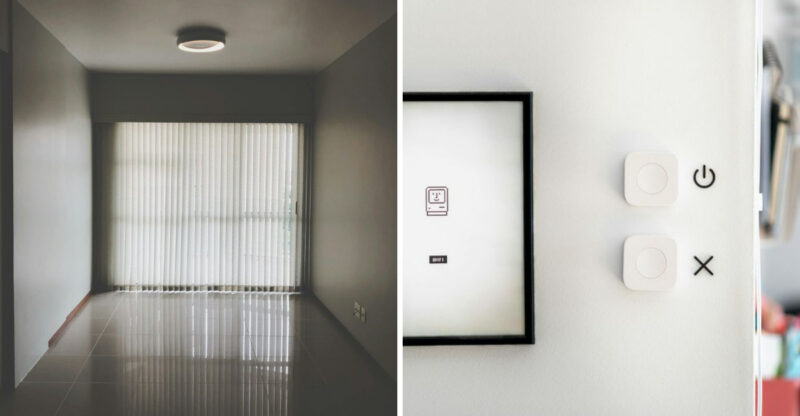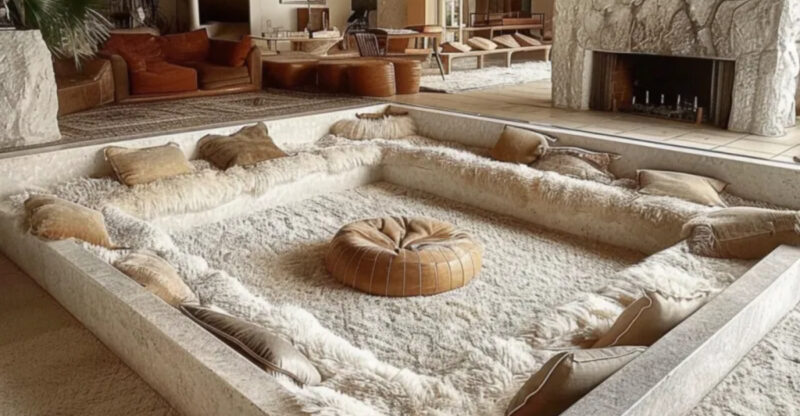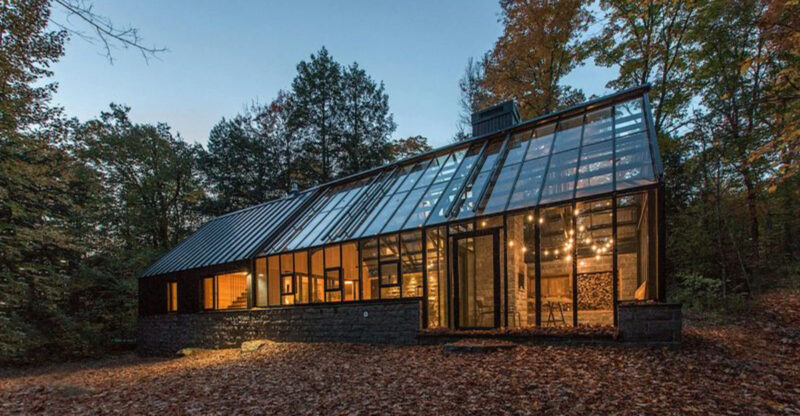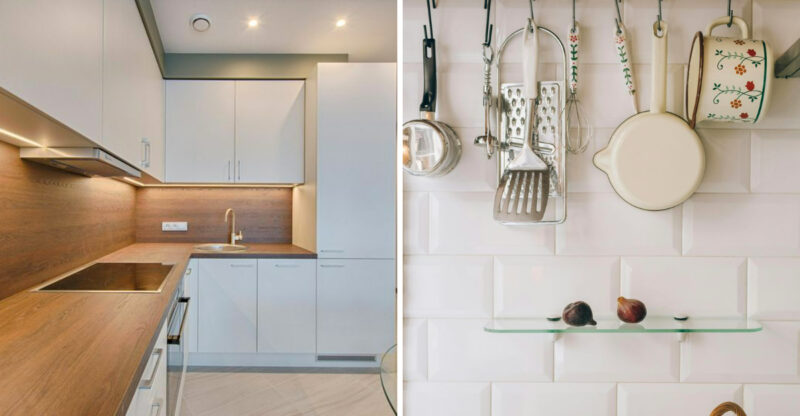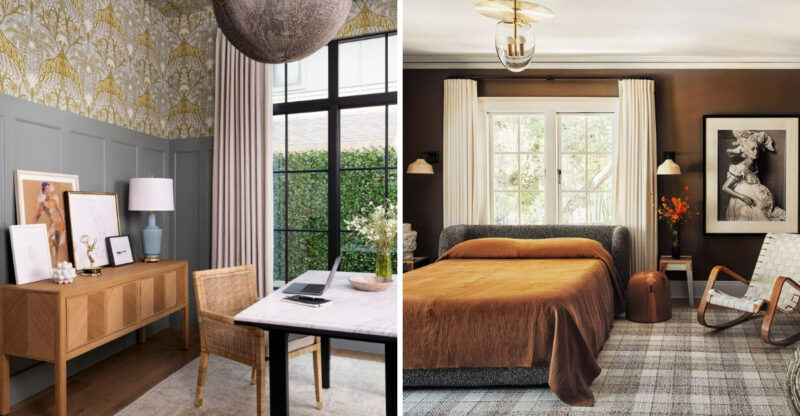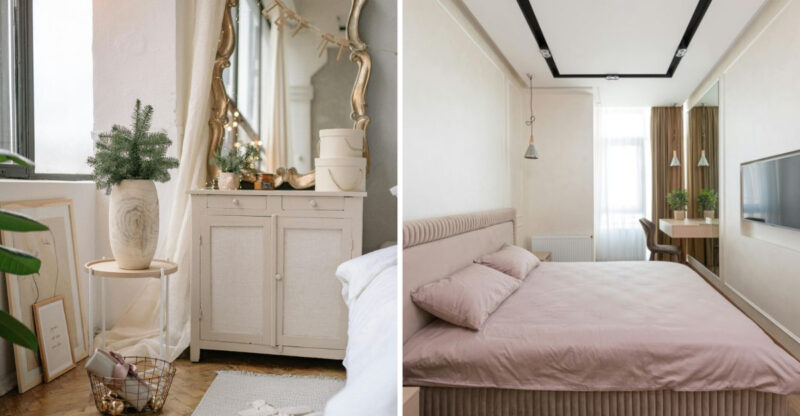Farmhouse Style Is Over, Discover The Kitchen Looks Leading 2026
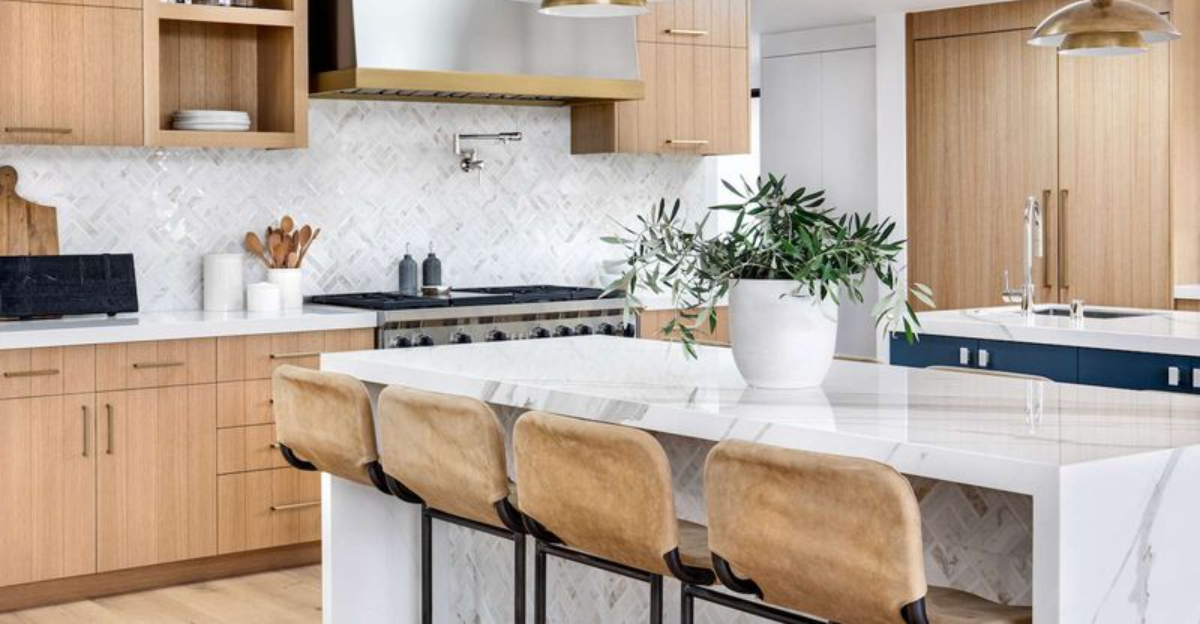
Remember those shiplap walls, mason jar fixtures, and barn doors that dominated kitchens for what felt like forever? Well, folks, farmhouse style is finally heading back to the actual farm!
As a designer who’s seen trends come and go faster than milk boiling over, I’m thrilled to share what’s cooking for kitchens in 2026.
Get ready to transform your culinary space with these fresh, forward-thinking designs that will make your farmhouse kitchen feel as outdated as a butter churn.
1. Sleek Minimalism Takes Center Stage
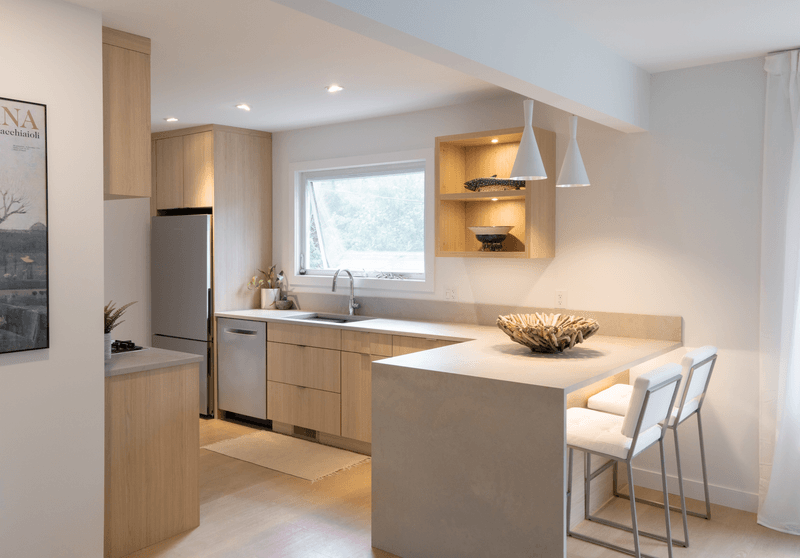
Gone are the days of cluttered countertops and busy patterns! Farmhouse kitchens with their abundance of knickknacks are making way for clean lines and uninterrupted surfaces.
Sleek minimalism creates a sense of calm that’s desperately needed in the heart of our homes. I’ve watched clients literally exhale when they step into these streamlined spaces, suddenly cooking feels less chaotic.
Think hidden appliances, handleless cabinetry, and monochromatic color schemes that allow your mind to rest while your culinary creativity soars.
2. Bold Color Statements Replace Neutral Farmhouse Palettes
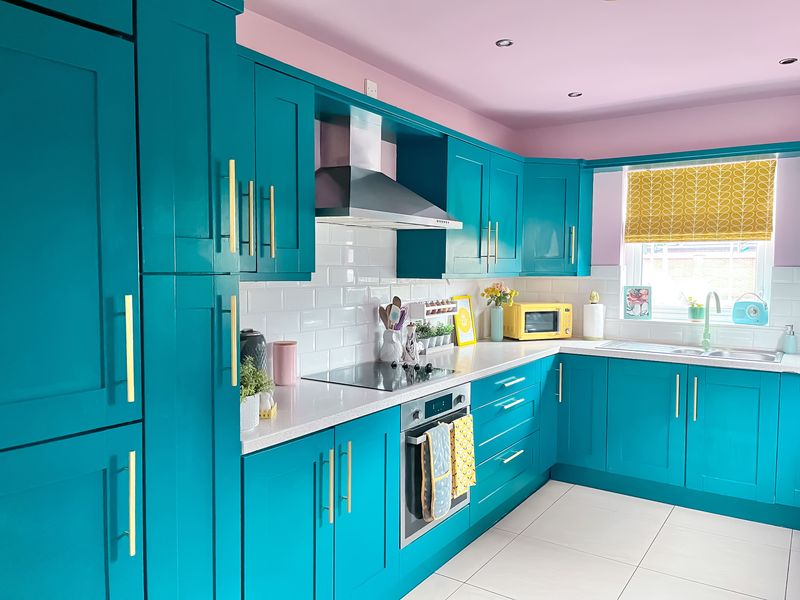
If you’re still rocking all-white everything with touches of distressed wood, wake up and smell the technicolor coffee. Bold kitchens are commanding attention with statement colors that energize the space.
Emerald green cabinetry, cobalt blue islands, and even aubergine pantry doors are replacing those tired neutral farmhouse palettes. These colors don’t just look amazing, they actually affect your mood while cooking.
How many times have I told clients that color is like seasoning for your kitchen? Just the right amount transforms the entire experience from bland to brilliant.
3. Smart Technology Seamlessly Integrated
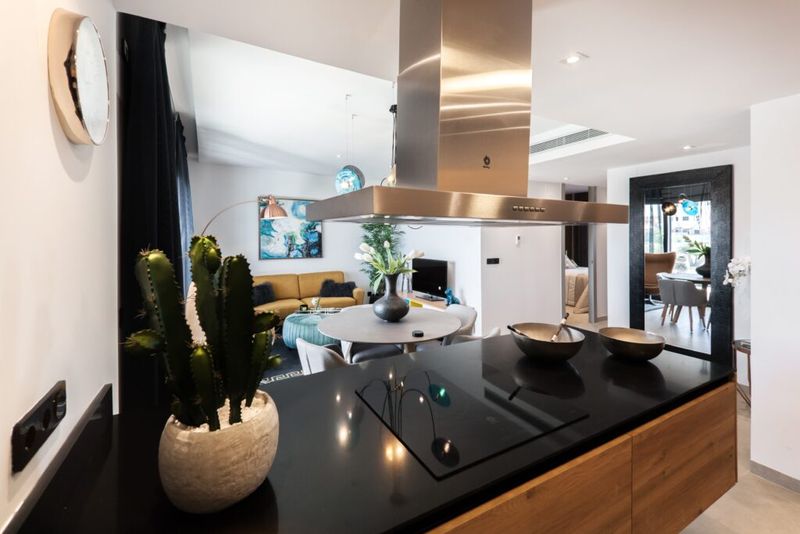
Though farmhouse kitchens charmed us with their nostalgic simplicity, they weren’t exactly cutting-edge. Smart kitchens are now the gold standard for forward-thinking homeowners who want function with their form.
Voice-activated faucets, refrigerators that track groceries, and countertops that charge your devices while displaying recipes are becoming standard features. I’ve watched skeptical clients become complete tech converts after experiencing the convenience.
Where we once embraced the rustic and manual, we’re now welcoming intuitive technology that anticipates our needs before we even realize them.
4. Curved Cabinetry Creates Organic Flow

Are you still living with those rigid, boxy farmhouse cabinets? Curved cabinetry is revolutionizing kitchen design with soft, organic shapes that feel almost sculptural.
Curved islands, rounded corner cabinets, and arched doorways create movement in the kitchen that rectangular designs simply can’t match. This approach feels both futuristic and timeless simultaneously.
When clients ask what will stand the test of time better than farmhouse style, I point to these flowing designs. They connect with something deeply human in our appreciation of natural forms rather than the manufactured perfection of straight lines.
5. Sustainable Materials With Modern Applications
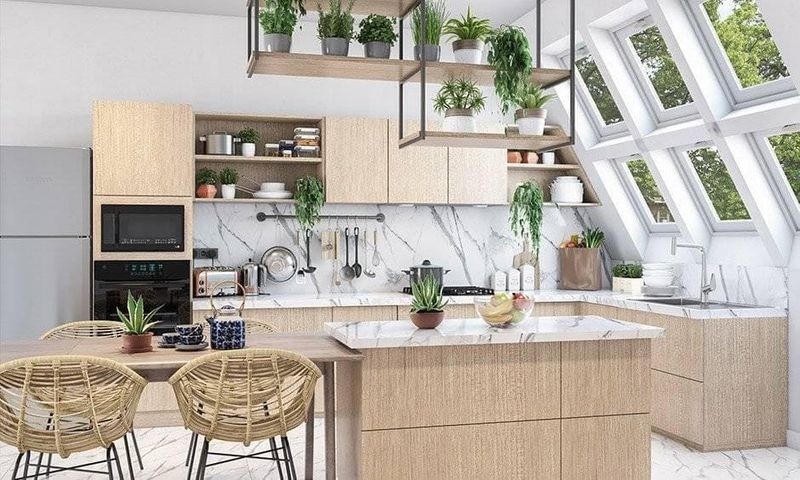
If farmhouse style taught us anything worthwhile, it’s an appreciation for natural materials, but 2026 takes this concept light-years beyond reclaimed barn wood. Sustainable kitchens now feature innovative eco-materials that didn’t even exist five years ago.
Countertops made from recycled glass and concrete, cabinet fronts crafted from compressed paper waste, and flooring derived from rapidly renewable resources like bamboo and cork. These materials tell a story of forward-thinking responsibility rather than backward-looking nostalgia.
How refreshing to design spaces that honor our planet’s future instead of just romanticizing its past!
6. Mixed Metal Accents
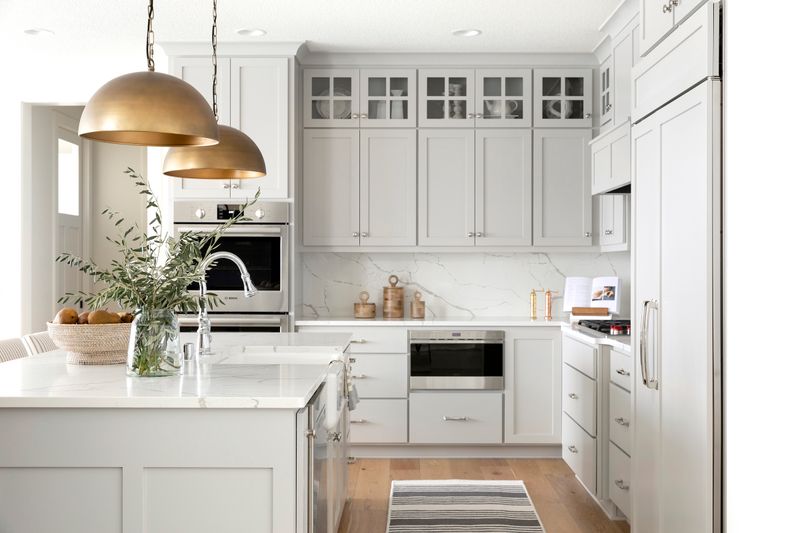
Gone are the days when kitchens featured just one metal finish throughout. The modern kitchen embraces a carefully curated mix of brass, copper, matte black, and chrome elements that create visual interest and depth.
This approach feels more collected and personal than the uniform look of farmhouse styles. Professional designers recommend limiting your palette to 2-3 complementary metals to avoid chaos. The primary metal should cover about 60% of fixtures, with accent metals making up the remainder.
Cabinet hardware, lighting fixtures, and faucets offer perfect opportunities to introduce this trend without overwhelming the space. The key is intentional placement that creates a cohesive look rather than a mismatched afterthought.
7. Open Shelving With Artful Displays
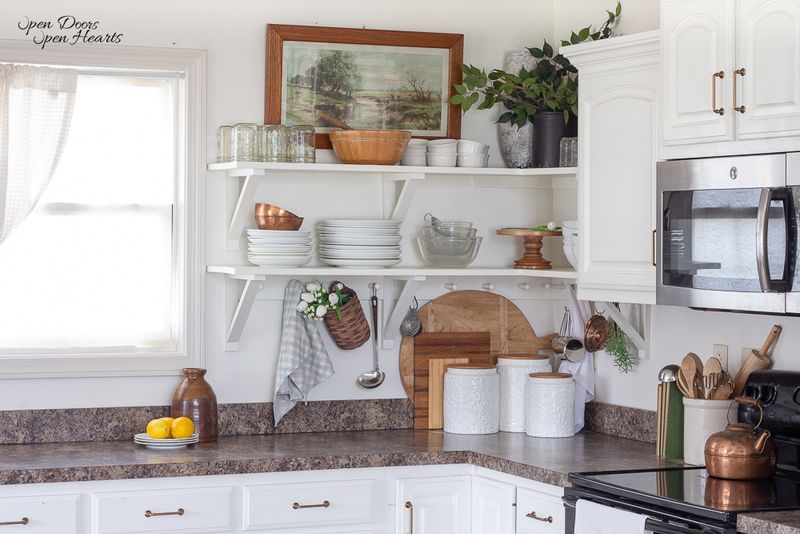
Unlike farmhouse shelving crammed with mason jars and vintage signs, 2026’s open shelving serves as a gallery space for meaningful objects. Homeowners are trading cluttered collectibles for curated displays featuring handmade ceramics, sculptural vessels, and artisanal kitchen tools that double as functional art.
The key difference lies in restraint, each item earns its place through beauty or purpose. Negative space becomes as important as the objects themselves, allowing each piece room to breathe and be appreciated.
Color coordination has given way to textural harmony, with matte finishes, natural materials, and subtle variations creating visual cohesion without matching sets. This approach feels more sophisticated and personal than farmhouse’s mass-produced aesthetic.
8. Textured Backsplashes
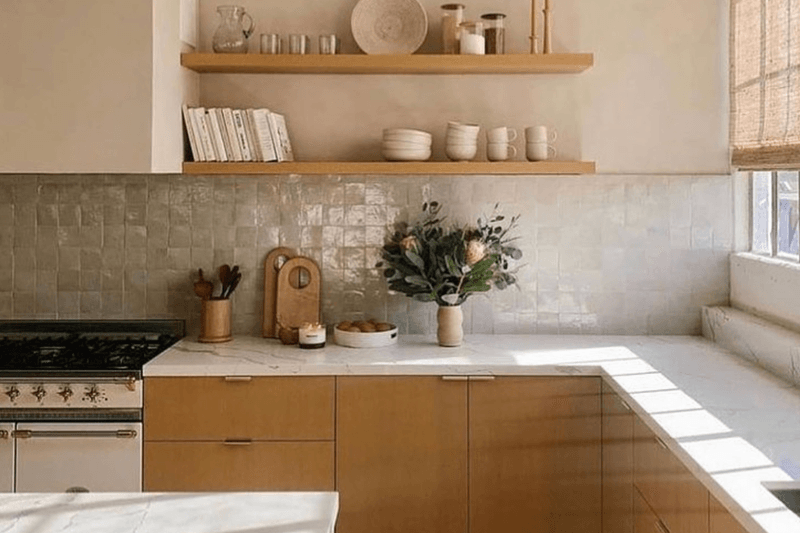
Subway tile’s long reign is finally ending as dimensional backsplashes take center stage. Zellige tiles with their handcrafted imperfections catch light in captivating ways that flat surfaces simply can’t match. Their subtle color variations and glossy finish create depth that changes throughout the day.
Relief patterns in concrete, natural stone, and even carved wood are bringing tactile interest to kitchen walls. These textured elements create focal points that draw the eye without relying on bold colors or busy patterns.
Homeowners particularly love how these surfaces develop character over time, unlike farmhouse’s pristine white backsplashes that showed every splash and stain. This embrace of natural patina reflects a broader shift toward materials that age gracefully rather than deteriorate.
9. Matte Black Fixtures
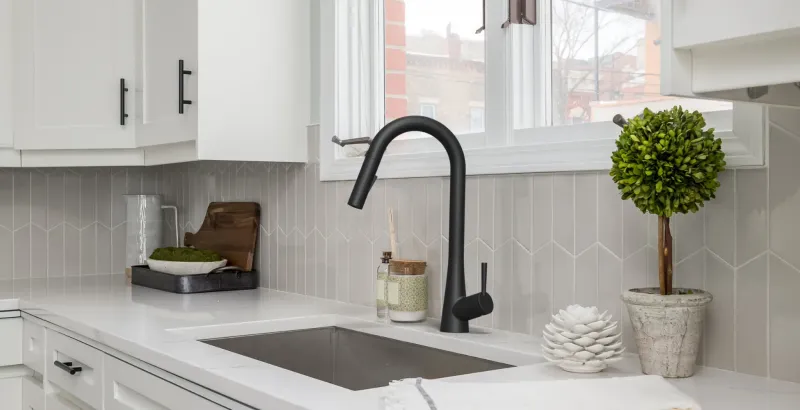
Farmhouse’s chrome and brushed nickel are yielding to sophisticated matte black fixtures that anchor kitchen spaces with quiet confidence. Unlike farmhouse’s nostalgic appeal, these fixtures bring architectural strength and contemporary edge to kitchens without overwhelming other design elements.
Faucets, cabinet pulls, lighting, and even appliances are appearing in this versatile finish that pairs beautifully with nearly any color scheme. Fingerprints and water spots virtually disappear on these surfaces, making them practical choices for busy kitchens.
Manufacturers have responded to this trend by offering more options at various price points, making this look accessible to different budgets. The contrast between black fixtures and lighter surfaces creates definition that highlights thoughtful design choices throughout the space.
10. Scandinavian-Inspired Warmth
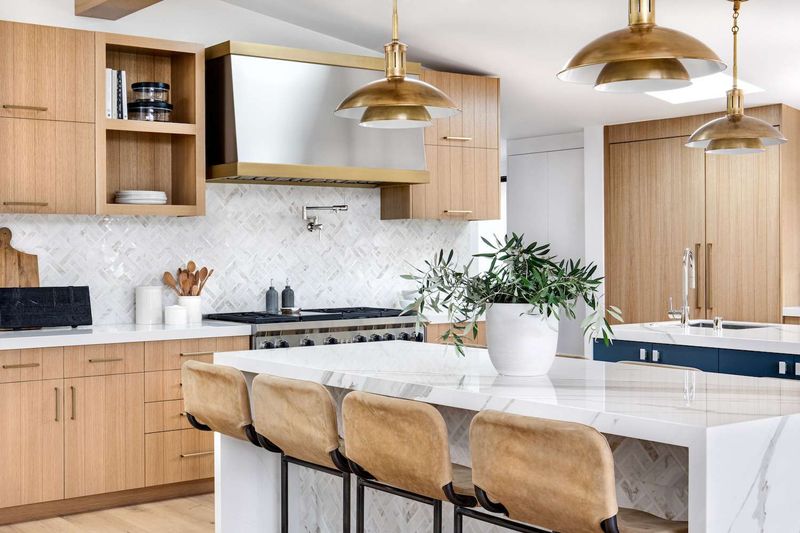
The sterile white farmhouse kitchen has evolved into something more nuanced and inviting. Taking cues from Scandinavian design, 2026 kitchens embrace warm minimalism through light woods, soft textures, and thoughtful details that create comfort without clutter.
Blonde oak cabinetry with visible grain brings organic warmth that white-painted wood simply can’t match. Wool textiles, leather details, and ceramics in earthy tones add tactile richness that invites touch.
Natural light plays a crucial role, with window treatments that filter rather than block sunshine. The overall effect feels both cleaner and cozier than farmhouse style. Once again, proving that minimalism doesn’t have to feel cold or impersonal when natural elements take center stage.
11. Industrial-Chic Elements
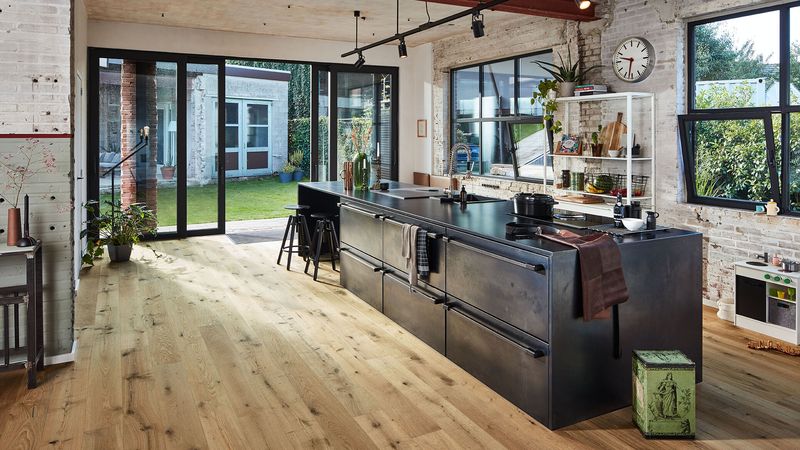
Raw materials with authentic character are replacing a farmhouse’s deliberately distressed finishes. Exposed brick, concrete countertops, and steel elements bring industrial heritage into modern kitchens without the artificial aging that defined farmhouse style.
Statement range hoods in blackened steel or patinated copper command attention while serving an essential function. These architectural focal points replace the farmhouse’s decorative signs and wreaths with purposeful beauty.
Lighting fixtures featuring exposed bulbs and metal frameworks add drama without fussiness. The authenticity of these materials connects to craftsmanship traditions while feeling thoroughly contemporary. A perfect balance for homeowners who appreciate history but want to live firmly in the present.

